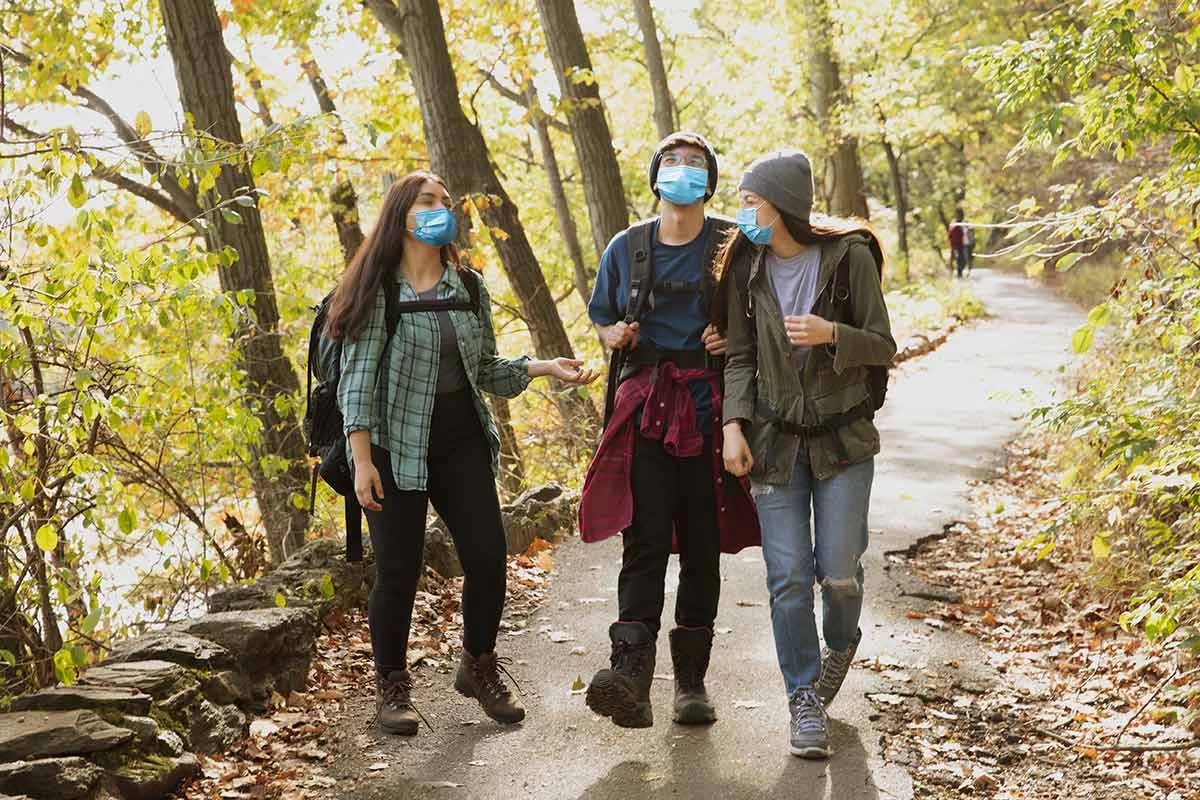The U.S. Centers for Disease Control and Prevention has updated its guidelines for outdoor masking to prevent the spread of COVID-19. So has the state of Colorado and many of its cities and counties.
As with so much as it relates to the coronavirus, the messaging has been mixed.
The CDC’s updated guidelines apply to the fully vaccinated against COVID-19. While there’s a lot of detail, they boil down to this: if you’re fully vaccinated, don’t sweat the mask when you’re outside unless you’re in a crowd.

The state of Colorado; the City and County of Denver; and the former Tri-County Health Department covering Arapahoe, Adams, and Douglas Counties have gone further yet. All three had lifted their outdoor mask mandates prior to the CDC’s updates – for those vaccinated and otherwise.
What’s a responsible citizen to do? After all, coronavirus variants that are much more easily transmitted and more virulent and deadly now comprise the majority of U.S. cases. The answer is to strike a balance, suggests Dr. Michelle Barron, UCHealth’s top infectious disease specialist.
“I actually am pleased with the announcement from the CDC that says if you’re vaccinated, you don’t have to wear a mask outside,” Barron says. “I think it will allow people to have more freedom.”
Vaccination matters when it comes to wearing masks outdoors
But with freedom comes responsibility. When it comes to COVID-19 and outdoor masking, that responsibility means considering exactly where outdoors you are as well as, if you end up in a group, the makeup and size of that group.
Even the fully vaccinated should continue to wear masks in crowded outdoor spaces, the CDC and Barron agree. Even in smaller groups, one should take stock.
“Children can’t get vaccinated yet. Some people are in transition in their vaccination status. Some haven’t been vaccinated at all. You don’t want to make the assumption that people are vaccinated,” Barron said.
Indeed, as of April 28, the state of Colorado data showed 30% of the state’s population to be fully vaccinated and 44% to be at least partially vaccinated, meaning they had had at least one of the two required Pfizer and Moderna shots that comprised 97% of the doses administered in the state. (The Johnson & Johnson vaccine, a single-shot vaccine, had been given 139,287 times as compared to Pfizer and Moderna’s combined total of more than 4 million injections.)
Take a (maskless) walk

As the weather improves, the unvaccinated and vaccinated alike can walk hike, bike, or run without masking up, Barron says, as long as they don’t end up in long, face-to-face conversations.
The data back her up. Studies have repeatedly shown coronavirus transmission to be far more likely indoors than outdoors, and rare instances of outdoor spread – some estimates hint at roughly one in 20 cases – were mostly at mass gatherings.
A recent study from Ireland found even slimmer odds of catching the coronavirus outdoors. Just 262 of 232,164 COVID-19 cases recorded in that country through March 24 (a point at which just 11% of the population had received at least one dose of vaccine) had been traced to outdoor transmission: a rate of just 0.1 percent. More than 97 percent of cases involving suspected outdoor transmission came from 41 outbreaks at construction sites and sports-and-fitness activities.
Linsey Marr, a Virginia Tech engineering professor who played a central role in shifting the focus of coronavirus transmission to aerosols (invisible airborne particles), put it this way in an interview with NPR: “Virus just cannot accumulate in the air outdoors,” she said. “It’s like putting a drop of dye into the ocean. If you happen to be right next to it, then maybe you’ll get a whiff of it. But it’s going to become diluted rapidly into the huge atmosphere.”
But then, consider what John M. Douglas, the Tri-County Health Department’s chief, said in the announcement of the department’s relaxing of outdoor-masking rules: “We’re not out of the woods yet. Until every person has had the opportunity to get the COVID-19 vaccine, many in our communities remain at risk for serious illness from this virus. By continuing to wear face coverings we can protect our friends and loved ones and minimize the impact that outbreaks have on our schools and businesses.”
Given the tens of thousands of new COVID-19 cases in the United States and Colorado case counts that are still bouncing between 1,000 and 2,000 cases a day, it’s hard to argue with that.
“The issue is, there’s nuance here, and everybody wants a black-and-white answer,” Barron said.
The bottom line for now: go ahead and skip the mask if you’re walking around the neighborhood or jogging, hiking, or biking further afield. But have a mask handy in case you end up in a crowd or in close quarters with those whose vaccination status you’re not sure of. And if eligible and you haven’t already, please do get vaccinated. It’s safe, and it’s the ticket driving case counts down to the point that we can ditch masks entirely.
“The vaccines are very effective, but you have to get the vaccine for it to be effective,” Barron said.
